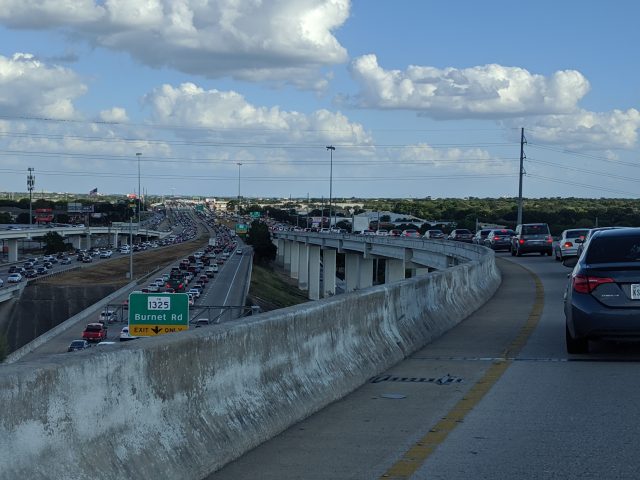
It's 2020: we finally live in the future! Or at least a future—one where broadband Internet connections and portable, reasonably high-powered computing tools are pervasive and widely accessible, even if they aren't yet universal. Millions of workers, including all of us here at Ars, use those tools to do traditional "office jobs" from nontraditional home offices.
Tens of millions of jobs at all points of the income and skill spectrum are of course not suited to remote work. Doctors, dentists, and countless other healthcare workers of the world will always need to be hands-on with patients, just as teachers need to be in schools, construction workers need to be on building sites, scientists need to be in labs, wait staff need to be in restaurants, judges need to be in court, and hospitality employees need to be in hotels. All of that said, though, many more of the hundreds of different kinds of jobs Americans do can be done off-site than currently are.
Roughly a quarter of us are already doing at least some work remotely. About 24 percent of US workers employed full-time did "some or all" of their work at home, according to the most recent federal data available. Even as some workplaces become increasingly distributed around the nation and the world, though, others are reversing course and doubling down on the corporate campus. So as we here at Ars look toward the future of work, we find ourselves wondering: employers and employees alike benefit from getting some folks out of cubeville, so what are so many businesses and managers afraid of?
A surprisingly ancient argument
The idea of remote work, as we currently imagine it, goes back about 50 years. The fight over whether employees should be allowed to do remote work—whether they can in fact be trusted with it—goes back almost exactly as long.
The first documented use of the word "telecommute" showed up in 1974 when The Economist wrote: "As there is no logical reason why the cost of telecommunication should vary with distance, quite a lot of people by the late 1980s will telecommute daily to their London offices while living on a Pacific island if they want to." Similarly, futurist writer Alvin Toffler (together with his wife Heidi Toffler, uncredited) described the concept perfectly in the 1980 book The Third Wave:
When we suddenly make available technologies that can place a low-cost “work station” in any home, providing it with a “smart” typewriter, perhaps, along with a facsimile machine or computer console and teleconferencing equipment, the possibilities for home work are radically extended.
As the idea of telework landed in the 1970s, "pro" and "con" camps formed, became entrenched, and dug in rapidly thereafter. By January 1984, Time magazine had "fans and foes take second looks" at proliferating "experimental projects" in telecommuting—at the time still novel but potentially destined to become much less so.
In the 1980s the state of California commissioned a study on the potential costs and benefits of expanding telework among state employees. The final report (PDF), published in 1990, is an extremely familiar tune to the one still sung today.
Remote work "enhances the quality of work life for telecommuters, including those with disabilities," the report found. "Telecommuting more than pays its way ... there are societal benefits as well."
The group that compiled the report determined that telecommuting "should be encouraged to expand within state government, that every state agency should have the option of using telecommuting both as a means of improving its effectiveness and for reducing traffic congestion and air pollution." That said, the working group also cautioned that in order to be effective, a telecommuting program must be "implemented properly and [have] its utility monitored regularly."
The California report was one of the earlier deep-dive efforts to determine if remote work could be effective or valuable, but not the last. Dozens of studies have emerged in the 30 years since backing up the state working group's findings. Taken in aggregate, they show remote work, where feasible, has a clear pattern of benefits for both workers and the firms that employ them.
"The advantages [of telework] are many," Johnny C. Taylor, president and CEO of the Society for Human Resource Management, told Ars. "It's a good thing for several reasons from the employer's perspective in a very tight labor market."
The idea may date back to the 1970s, but the potential for telework on a mass scale truly took off in the early years of the 21st century. While about 50 percent of US adults had Internet access in the year 2000, that number had jumped to more than 75 percent by the year 2010 and currently hovers around 90 percent, according to data gathered by the Pew Research Center. Broadband use in particular jumped from being virtually nonexistent in US homes in 2000 to greater than 60 percent of US homes by 2010. (Presently, an estimated 42.8 million US residents lack broadband access at home.)
Likewise, the computing tools to use on all those home broadband networks became not only higher-powered but also cheaper and easier to acquire. A mid- to high-range laptop in the year 1999 cost between $1,800 and $2,000, was a pain in the butt to drag around on a college campus or public transit, and probably did not have Wi-Fi capabilities. (Mine certainly didn't.) In 2019, you certainly can pay that much for a high-end laptop, but you can also purchase an array of good-quality ultra-thin, lightweight computers for less than half that much—to say nothing of how connected you can stay with a smartphone, which more than 80 percent of US adults now own.

Get off the road
In the most populated and congested US cities, an average commute can easily run an hour or more each way. Ten percent of US workers commute more than 60 minutes each way per day. And while public transportation, cycling, or walking are a good option in several of those cities, housing costs and decades of infrastructure and policy choices mean that more than 75 percent of American workers drive solo to work.
Commutes in California's high-tech hub, the Bay Area, are legendarily bad, driven by a surge of tech workers and support staff facing a severe housing crisis. Unable to find nearby housing, many employees and contract workers for major tech firms such as Google live farther and farther away from the corporate campuses they need to get to each morning.
Drivers have their coping mechanisms—see also: podcasts—but nobody really likes driving to work. No matter where you live, other drivers are absolutely the worst, and being part of a traffic jam doesn't really improve anyone's Monday. Paying for a car commute is also not particularly pleasant, as the cost of gas climbs over time, and more and more cities introduce some form of tolling (sometimes very high) to major roads to alleviate—or at least get compensated for—congestion.
Even those among us who do live in the handful of cities with strong, robust transportation networks don't always enjoy the experience of using them. A subway commute that should take 20 minutes can stretch on all morning if something goes wrong (as often seems to happen).
Less stressful by far is simply not commuting at all and winning back between 30 and 90 minutes on each end of your workday for something more productive. And the less time you spend on the road, the less likely you are to become one of the more than 36,000 people who die in auto crashes and accidents each year.
But reducing car commuting is perhaps even more of a collective good than an individual good, as every single car that isn't on the road is at least one small step toward not making the climate crisis worse. Transportation accounts for about 29 percent of all US greenhouse gas emissions. Individuals in passenger vehicles certainly don't represent all transportation—the massive web of trucks, ships, and aircraft used for shipping factor in there, too—but they represent enough that it's worth reducing the number of commuters on the road.
Dell Inc. prides itself on encouraging remote work. The company published a report (PDF) in 2016 describing its telecommuting policy as a driver of sustainability efforts for the firm. "Dell work-from-home programs mitigate approximately 1.15 metric tonnes of CO2e per employee per year," the report determined, "with most of the decrease being related to employee GHG emissions and a smaller percentage attributable to Dell GHG emissions." Presently, the company estimates its telework programs prevent 35,000 metric tons of CO2e per year as compared to having the whole workforce commute.
reader comments
284